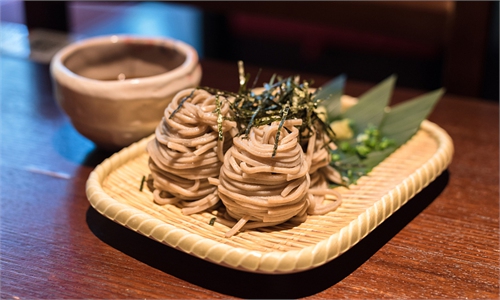
A reaper harvests wheat in a field in Mahui Village of Datong Town in Wu'an City, north China's Hebei Province, June 10, 2020. (Xinhua/Wang Xiao)
China has developed a breakthrough wheat variant, named Yangmai 33, with high resistance to scab and powdery mildew for the first time, Chinese media reported on Sunday.
Analysts said that the new variant will help China achieve its goal of increasing grain production by 2 percent, yet it will take time to commercialize the crop.
The new wheat, which has been evaluated by a panel of experts, is expected to become the next-generation dominant variant in China and solve the world's food shortages.
Wheat scab is a worldwide disease, known as the "cancer" of wheat, which sharply reduces harvests and produces toxins that endanger human life and health.
At present, the global genetic resources for resistance to wheat scab are scarce. The cloned resistance genes FHB1 and FHB7 can only enhance resistance to scab, but cannot fundamentally solve the problem, said experts of the evaluation team on Sunday, the Science and Technology Daily reported.
In recent years, wheat scab has been prevalent in the middle and lower reaches of the Yangtze River and the wheat-producing areas between the Yellow River and Huaihe River, affecting an area of 6.67 million hectares, accounting for one-quarter of China's wheat planting area, said Guo Wenshan, a professor who heads a wheat experts group under the Ministry of Agriculture and Rural Affairs, on Sunday.
The wheat was developed by a team led by Gao Derong, director of the wheat center at the Jiangsu Lixia River Agricultural Academy of Sciences.
Gao said that the breeding of Yangmai 33 relied on the application of molecular marker-assisted breeding. It also introduced the powdery mildew resistance gene PM21 by molecular breeding technology, which is highly resistant to powdery mildew. The new variety can be widely extended in production.
"China's molecular breeding is at an advanced global level. Molecular breeding is the equivalent of being a good cook, but you need to have good ingredients to make a good dish in the first place - the seeds," Wang Gangyi, a professor at Northeast Agricultural University, told the Global Times on Monday, noting that China's seed bank is not rich enough.
Ni Zhongfu, vice president of the College of Agronomy at China Agricultural University, said that using molecular breeding technology to strengthen all kinds of resistance gene polymerization greatly improves the efficiency of breeding and strain improvement precision. This process will promote the development of green high-quality wheat in China, and ensure the security of the seed industry and food production in China.
Wang said that at present, China is nearly self-sufficient in wheat supply, while seed independence exceeds 90 percent. Self-sufficiency in rice seeds is nearly 100 percent, leaving corn the only major grain that heavily relies on imports.
It has been 30 years since China began to emphasize breeding, but it takes about 10 years to finish the process from breeding in a laboratory to farming. The industry chain of seed breeding is immature in China, which is the biggest problem facing the country's agriculture sector, Wang said.
Analysts said that China has realized this shortcoming and has made efforts to improve.
The Ministry of Agriculture and Rural Affairs began to promote the integration of production and research and development (R&D) in 2019. In February, the ministry, for the first time, ensured the dominant role of enterprises in the promotion and application of agricultural genetically modified organisms, as well as R&D.
Global Times


